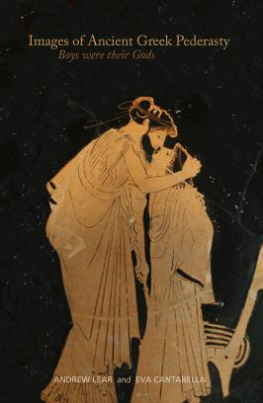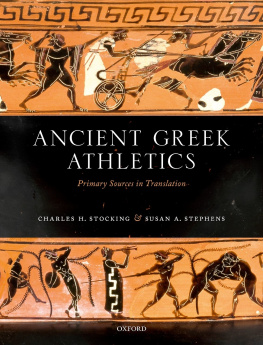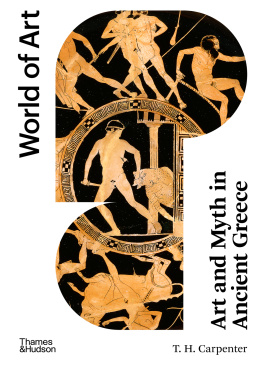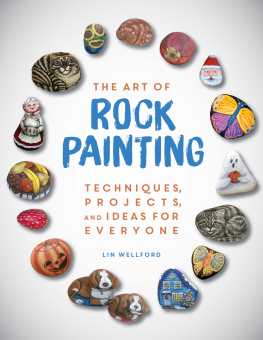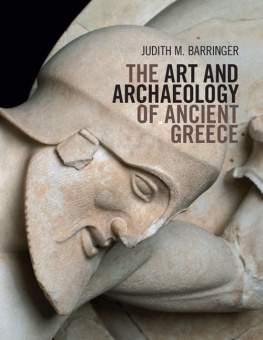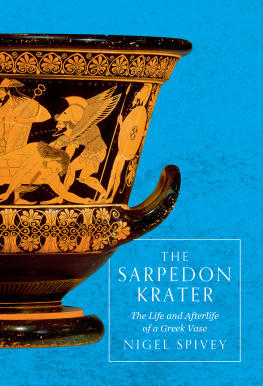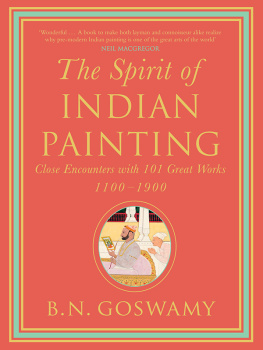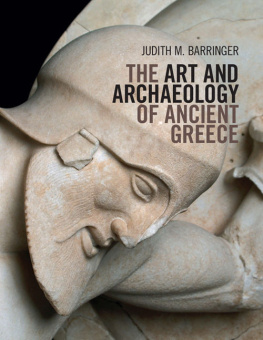
IMAGES OF ANCIENT GREEK PEDERASTY
Greek pederasty, or paiderastiathe social custom of erotic relations between adult men and adolescent boyswas a central characteristic of Greek culture. Both Greeks and non-Greeks saw it, along with the gymnasium with its intimate connection to pederasty, as markers of Greek identity. It is an important theme in Greek literature, from poetry to comedy to philosophy, and in Greek art as well. In Athenian vase-paintingin particular the painted scenes that decorate clay drinking vessels produced in Athens between the sixth and the fourth centuries BCpederasty is a major theme: indeed, pederastic courtship is one of the mortal activities most commonly depicted.
This lavishly illustrated book brings together, for the first time, all of the different ways in which vase-painting portrays or refers to pederasty, from scenes of courtship, foreplay, and sex, to scenes of Zeus with his boy-love Ganymede, to painted inscriptions praising the beauty of boys. The book shows how painters used the language of vase-paintingwhat we call "iconography"to cast pederasty in an idealizing light, portraying it as part of a world in which beautiful elite males display praiseworthy attitudes, such as moderation, and engage in approved activities, such as hunting, athletics, and the symposium. The book also incorporates a comprehensive catalogue of relevant vase-paintings, compiled by noted archaeologist Keith DeVries. It is the most comprehensive treatment available of an institution that has few modern parallels.
Eva Cantarella is Professor of Greek Law at the University of Milan.
Andrew Lear is Assistant Professor of Classics at DePauw University.
IMAGES OF ANCIENT GREEK PEDERASTY
Boys were their gods
Andrew Lear and Eva Cantarella
LONDON AND NEW YORK
First published 2008
by Routledge
2 Park Square, Milton Park, Abingdon, Oxon OX14 4RN
Simultaneously published in the USA and Canada
by Routledge
270 Madison Ave, New York, NY 10016
Routledge is an imprint of the Taylor & Francis Group, an informa business
This edition published in the Taylor & Francis e-Library, 2009.
To purchase your own copy of this or any of Taylor & Francis or Routledges collection of thousands of eBooks please go to www.eBookstore.tandf.co.uk.
2008 Eva Cantarella and Andrew Lear
All rights reserved. No part of this book may be reprinted or
reproduced or utilized in any form or by any electronic,
mechanical, or other means, now known or hereafter
invented, including photocopying and recording, or in any
information storage or retrieval system, without permission in
writing from the publishers.
British Library Cataloguing in Publication Data
A catalogue record for this book is available from the British Library
Library of Congress Cataloguing in Publication Data
A catalog record for this book has been requested
ISBN 0-203-86627-4 Master e-book ISBN
ISBN10:0415223679 (hbk)
ISBN13:9780415223676 (hbk)
Copyright 2008/2009 Mobipocket.com. All rights reserved.
Reader's Guide
This ebook has been optimized for MobiPocket PDA.
Tables may have been presented to accommodate this Device's Limitations.
Table content may have been removed due to this Device's Limitations.
Image presentation is limited by this Device's Screen resolution.
All possible language characters have been included within the Font handling ability of this Device.
When they asked the poet Anacreon why he wrote hymns to boys instead of the gods, he replied "because boys are our gods."
(Footnote to an ancient edition of Pindar's second Isthmian Ode
(iii 213 Drachmann)
CONTENTS
EVA CANTARELLA
ANDREW LEAR
ANDREW LEAR
ANDREW LEAR
ANDREW LEAR
ANDREW LEAR
ANDREW LEAR
ANDREW LEAR
ANDREW LEAR
ANDREW LEAR AND EVA CANTARELLA
ANDREW LEAR (based on the research of Keith DeVries)
FIGURES
ACKNOWLEDGEMENTS
This book has been in progress for a number of years, and in that time many people have provided the authors with generous assistance. Now that the work is complete, we wish to thank all of them. It would be impossible to list individually the many directors, curators, and staff members at the museums from whose collections we illustrate vases, but we are sincerely grateful to them all. We also owe a particular debt of gratitude to the people and institutions that have hosted us while we completed our research: Matthew Santirocco and the NYU Department of Classics; Franois Lissarrague and the Centre Louis Gernet; Alessandro Schiesaro, the King's College, London, Department of Classics, and the Institute of Classical Studies, where a special note of thanks is due to Sue Willetts. We also wish to thank Richard Stoneman and the staff of our publisher, Routledge, for their years of assistance and patience. We have benefited enormously from the kindness and counsel of many colleagues. In particular, we extend our thanks to Benjamin Acosta-Hughes, Larissa Bonfante, James Davidson, Thomas Hubbard, Clemente Marconi, Kathryn Morgan, Sarah Morris, and Alan Shapiro. We also owe a debt of gratitude to our friends Owen Andrews, Laura Argiri, Garth Haller, Lorenzo Gagliardi, Sergio Longo, Marxiano Melotti, and Corey O'Hara. Finally, this project could not have been completedor even begunwithout the unstinting generosity of our late friend, Keith DeVries. We hope to repay Keith's generosity in some measure by publishing the results of his own research on pederastic scenes in vase-painting as an appendix to this volume. We take this opportunity to dedicate this study to his memory.
PREFACE
Why this book?
Andrew Lear and Eva Cantarella
The ancient Greeks, as is widely known, had a custom which they called paiderastia, or pederasty, consisting of erotic relations between adult men and adolescent boys. The limits on this practicehow widespread it was in terms of geography and social class, precisely what was approved and what disapproved, when and how it began to be practiced, when and why it stoppedare the subjects of much debate among modern scholars. However, the basic fact remains: it was practiced on a more widespread basis and with greater public approval than any other form of homosexual relations at any time in any Western culture.
This practice is a major theme in the remains of Greek literatureprincipally, although not exclusively, in poetry, comedy, philosophy, and courtroom speeches. It is also important in the visual arts: one of the most plentiful sources of information on the topic is the paintings that decorated the clay drinking vessels produced by the highly sophisticated pot industry of Athens in the sixth to the fourth centuries BC.
This book provides an overview of the portrayal of pederasty on those pots. By comparing the paintings on them both with each other and with the literary and historical sources of evidence, it attempts to clarify what they show us (or imply) about the actual practice of pederasty and the ideals connected with it.
The subject is not an altogether new one. The importance of pederastic scenes in vase-painting was widely acknowledged among the great German nineteenth-century Classicists,the topic of so-called kalos
Next page
